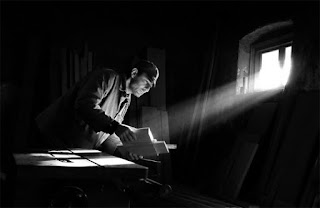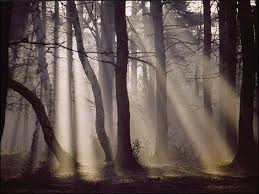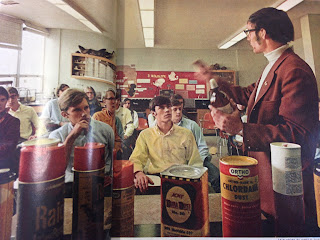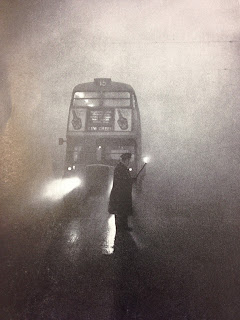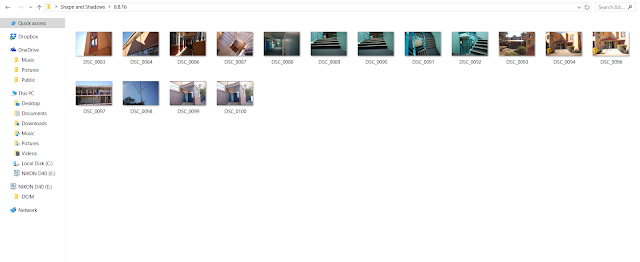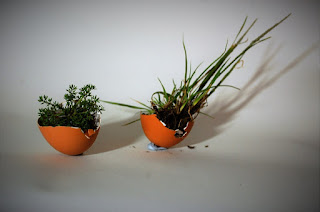
Aperture: f/5.6
Shutter Speed: 1/200
ISO: 200
Edits:
+
basic edits in Windows Photo Editor
+ Dark shadow Filter, 5th option on the basic Windows Photo Editor
+ colour and saturation increase also with W.P.E
Analysis: This image is of a pair of eggshells, with the camera looking directly down on the composition.The light source is held fairly far from the composition setup, creating very long shadows that climb up the back infinity wall. Because it is held far back, the shadow is very sharp and defined and strong outlines of the eggshells, because I used an infinity wall, the shadow "climbs" the background paper as evident in the shadow of the composition trailing to the top left of the composition. The shadow of the right eggshell is elongated, but the left eggshell shadow is stumped.
This composition represents an Olive Cotton through the simplicity of the composition and type of subject used as the focal point. Along with this, the compositional rules and guidelines used in the photo are 'symmetry'
Symmetry: This rule is shown through the position of the eggshells as the subject and the direction of the shadow. The glasses are placed at the bottom center section of the composition and are parallel with the top and bottom of the photo. The light source is shining from the left side of the composition, resulting in the shadows being symmetrical.
